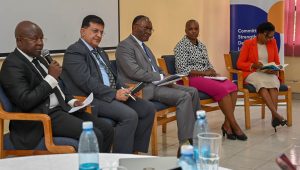Local Governments at the Forefront
Kenya has long been a nation historically known for hosting displaced population. With over 676,000 registered refugees from neighbouring countries like Somalia, South Sudan, and the Democratic Republic of Congo, predominantly residing in Garissa County and Turkana County, the nation faces a critical need to balance the reception of refugees with the demands of host communities. These challenges are further compounded by droughts and the ongoing displacement driven by regional conflicts. This article outlines how Kenya is grappling with those challenges by transforming migration management.

The Shift to Local Governance in Migration Management
In response, the Kenyan government introduced an initiative to transform refugee camps into municipalities, integrating refugees into local governance structures. This policy shift moves away from traditional camp-based models to an approach that emphasises coexistence and shared services between host and refugee communities. However, its success hinges on the capacity of local governments to implement these changes equitably and sustainably.
Bridging Policy and Practice
Local governments are pivotal to managing migration, bridging national policies and local realities. In communities with a big migrant population like Garissa and Turkana, county governments are responsible for delivering services, promoting social cohesion, and mediating resource conflicts. Yet, they face significant barriers, including limited authority, insufficient resources, and exclusion from national decision-making processes. These constraints undermine their ability to address community needs effectively. 
Empowering local governments is essential to closing the gap between policy and practice. With a focus on strengthening their capacity, they can ensure equitable service delivery, rebuild trust between host and refugee communities, and foster long-term resilience.
A Collaborative Initiative for Migration Governance
To address these challenges, Kenya School of Government have partnered with VNG International and The Hague Academy to carry out a comprehensive initiative supporting the counties of Garissa and Turkana. The programme engages stakeholders to identify gaps, delivers trainings to local leaders to become trainers for their own communities, and facilitate international study visits to the Netherlands to share best practices. The goal is to support Kenyan civil servants in building local capacity for inclusive governance, enabling the counties to integrate migration management into their systems while fostering social cohesion. 
While the formal role and mandate of local governments remains unclear, municipalities and Counties deal with the effects of migration every day. They are required to deliver services to both refugees and Kenyan communities in those functions devolved to them – such as health, education, infrastructure and water – but often do not understand or have access to what is required of them, and how they can be held accountable.
Toward Inclusive and Sustainable Futures
As Kenya navigates its evolving migration landscape, initiatives like these provide a blueprint for how local governments can lead in comprehensive and inclusive migration management. By centering the role of local governments and its key change-makers, this initiative not only tackles immediate challenges but also lays the foundation for long-term resilience and inclusive communities that benefit both host populations and refugees. 
The programme is part of a larger strategic partnership between VNG International, The Hague Academy for Local Governance and the Dutch Ministry of Foreign Affairs. The Sustainable Development through Improved Local Governance (SDLG) programme is a 5-year programme, focused on four thematic priorities (Security & Rule of Law, Migration, Local Revenue Mobilisation, and Integrated Water Management) and 12 countries.
For more information, visit the website: SDLG: Sustainable Development through improved Local Governance | VNG
Related courses
We offer a diversity of courses throughout the year. Here are several other courses you might like.

